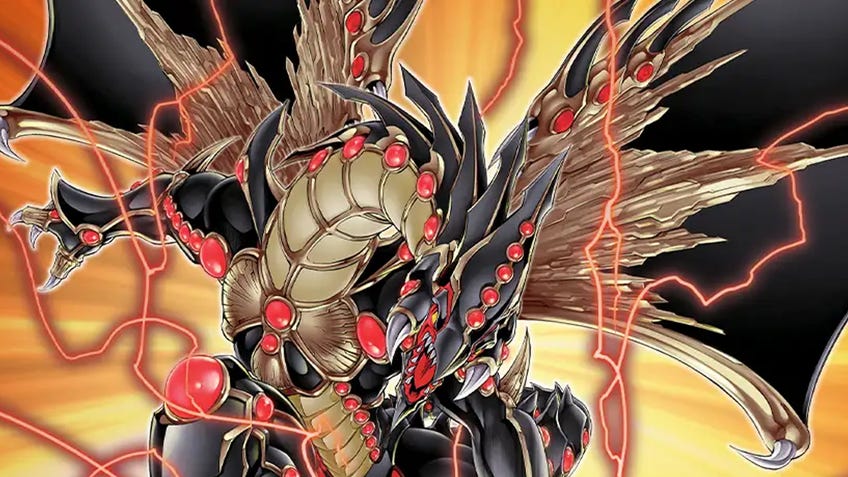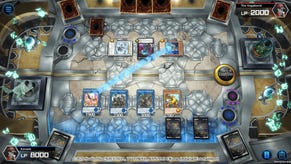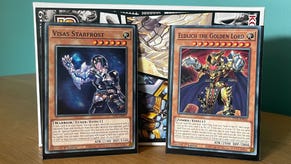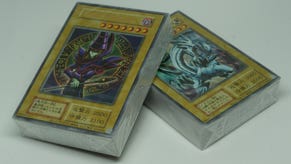7 best Legacy of Destruction cards in Yu-Gi-Oh!’s latest set
A nod to the past in cards that push the TCG into its future.
Another month, another Yu-Gi-Oh! set. The second core booster pack of Yu-Gi-Oh! in 2024 is Legacy of Destruction. Following the trend of the ongoing anniversary, the best Legacy of Destruction cards look back to the past while providing support for the latest and greatest in modern Yu-Gi-Oh!
Best Yu-Gi-Oh! Legacy of Destruction cards
- Diabellze the Original Sinkeeper
- Minerva, the Athenian Lightsworn
- Veidos the Dragon of Endless Darkness
- Way Where There's a Will
- Metaltronus
- Ragnaraika Chain Coils
- Blessing of the Voiceless Voice
You have callbacks to the original storyline of Yugi Moto and the Pharaoh from the anime and manga with new Silent Magician cards, you have Shining Sarcophagus that feels like an updated incarnation of Gold Sarcophagus, and a number of cards even make use of classic creatures or include references to the history and legacy of the franchise.
As we’ve seen in every set since Duelist Nexus, this is also another chance to get the rare Quarter Century Secret Rare-only Magicians of Bonds and Unity, a special card made especially for the anniversary that has only been released in core booster sets in this hard-to-find format.
But what are the best Legacy of Destruction cards in the new set, the pulls you should seek to add to your collection?
1. Diabellze the Original Sinkeeper
If you can’t beat them, join them
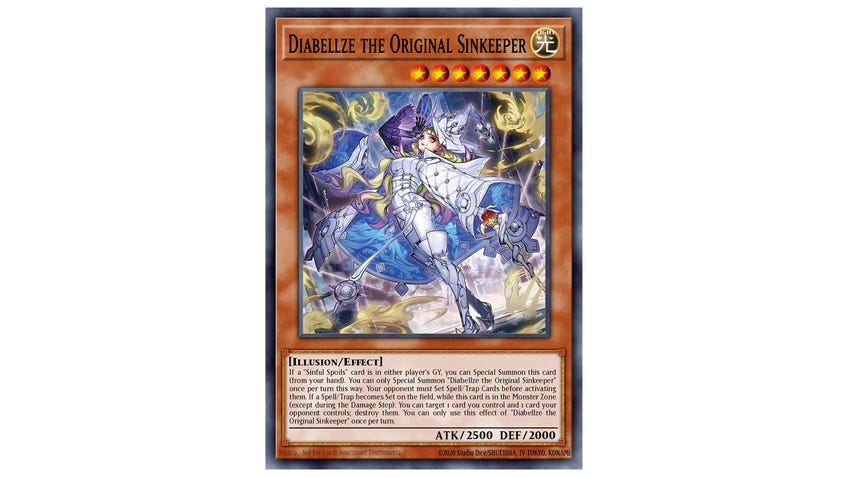
Diabellstar and the Snake Eyes/Sinful Spoils archetype have dominated the Yu-Gi-Oh! meta ever since their initial release in Age of Overlord. Despite the hit to Linkuriboh on the latest Yu-Gi-Oh! banlist, it’s not expected that the deck’s reign at the top of the game will end any time soon. So, why not bring some friends along for the ride?
While it shares many similarities to Diabellstar as another 2500-ATK Level 7 monster, acting almost as the white witch to the tainted vision of their sister, what makes this card so unique is its effectiveness both within the archetype and as a counter when playing against it. The card can be Special summoned provided there is a Sinfoil Spoils card in either player’s Graveyard, forcing your opponent to set spell and trap cards before activating with the once-per-turn ability to target one card on either field and destroy them whenever such a card is set on the field while in the Monster Zone.
Naturally, such powerful removal will find a home in the decks of many Snake Eyes players. For those struggling against the deck in the current meta, why not keep a copy or two in the side deck to bring out in game two or three of a competitive match to counter the Sinful Spoils strategy before it wipes you out? This dual-sided use is where the card shines - and coupled with another new card, Snake-Eyes Diabellstar, this dominant deck is set to evolve.
2. Minerva, the Athenian Lightsworn
From darkness comes light(sworn)
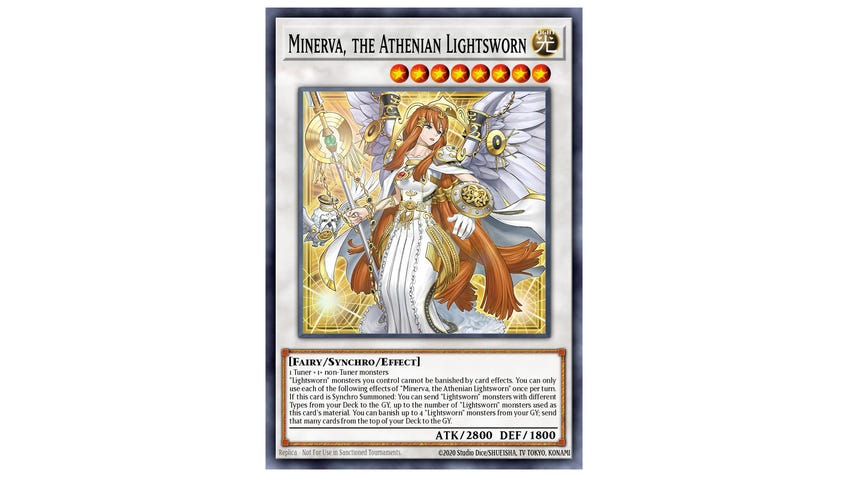
The beloved Lightsworn deck is back in its anniversary year. You know that’s a big deal when Konami is planning to reprint the structure deck to mark the occasion. Lightsworn remains one of the best Yu-Gi-Oh! structure decks to ever grace the game, as it propelled the deck into competitive status, and Minerva has the potential to act as a new boss monster to rekindle that competitive edge.
Minerva is a Synchro monster that updates the deck to counter many common issues facing it in the current evolved state of Yu-Gi-Oh!, in part thanks to preventing Lightsworn monsters you control from being banished. With the reliance of the deck on the Graveyard this is crucial to keeping the deck going, even if this won’t protect cards milled from the deck from being impacted by cards like Dimensional Fissure.
Luckily it makes up for this by providing the tools for extending the combo of the deck further than ever before, with the ability to mill cards from the deck by banishing Lightsworn monsters from the Graveyard and being able to send monsters of your choice with differing types when Synchro Summoned. It’s a consistency boost much needed to let the deck compete today.
3. Veidos the Dragon of Endless Darkness
From darkness comes… more darkness
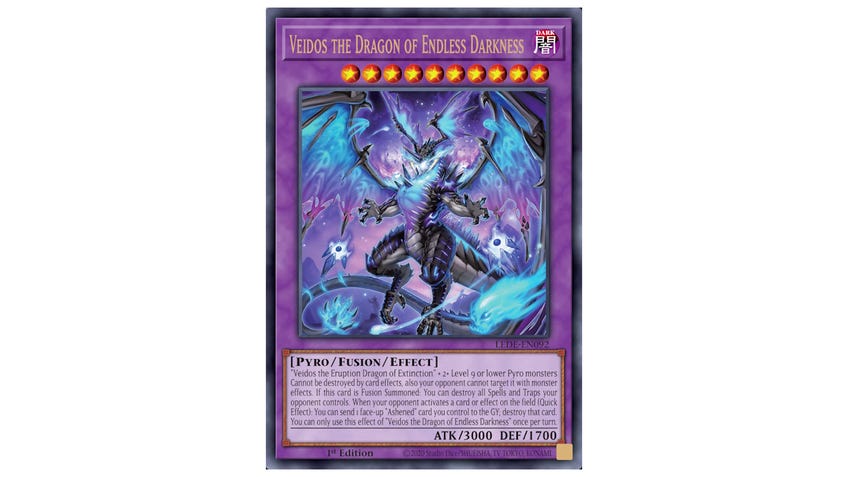
Ashened, the new TCG-exclusive archetype introduced in previous set Phantom Nightmare, has been in desperate need of some new support. With just a few cards in the last set the deck was simply not ready for competitive play, making it feel like something with potential but very much a work-in-progress. Turns out, that was just the trial run, and by evolving the boss monster introduced in the last set into something new and even more powerful, maybe we’re on the cusp of Ashened becoming a deck with a viable competitive strategy.
Veidos the Dragon of Endless Darkness is a Fusion monster which uses Veidos the Eruption Dragon of Extinction and two more Pyro monsters as material in order to be summoned. Provided you get it on the field, it’s a 3000-ATK beast of a dragon that can’t be destroyed by card effects or even targeted by monster effects.
It can counter Snake Eyes and other spell and trap-heavy decks by wiping your opponent's spell and trap area of the field when Fusion summoned, and you can even send a face-up Ashened to the Graveyard when an opponent activates a card or effect in order to destroy it.
With the prior incarnation of Veidos being a card you summoned to your opponent’s field in order to inflict pain from the other side, this is a monster you control and wield that will be far from easy to counter. Just what the deck needed.
4. Way Where There's a Will
Where there’s a will, there’s a way (to draw more cards)
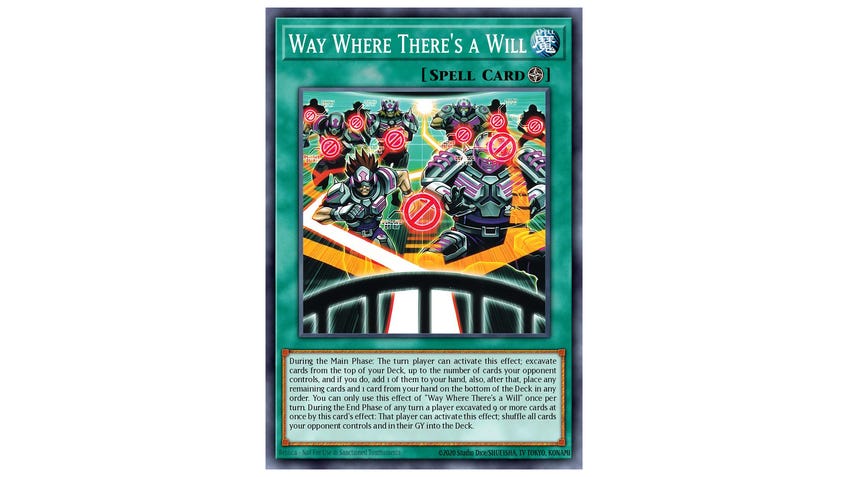
While it won’t be the card for everyone, and is also all-but useless if going first, Way Where There’s a Will is a field spell with the potential to cause harm against any opponent who overcommits - and, regardless, provides a much-needed boost to consistency for the player using it.
The idea is simple: excavate cards equal to the number on your opponent’s field, and add one to the hand. It’s a much-needed consistency boost and way to find the right card to counter your opponent when stuck going second as it improves the odds of finding the card you need, as opposed to the one-and-done generic draw effect of the recently-unbanned Chicken Game.
Anything with the ability to improve consistency and set up players for a counter when going second is good, but if your opponent has built up quite the impenetrable field with nine or more cards on their field when excavating from the deck, your opponent must shuffle their entire field and Graveyard in the End Phase. Back to square one, the tides are turned. Pull it off, and the game changes in an instant.
5. Metaltronus
Pedal to the Metal
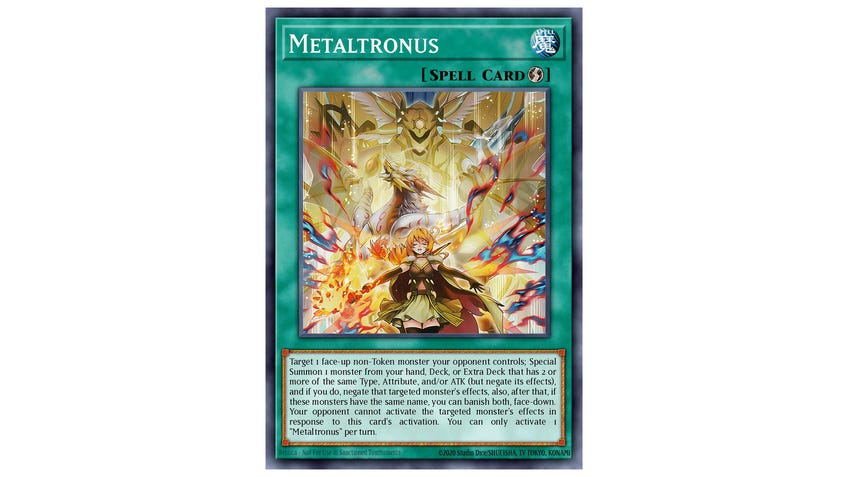
Removal and/or negation that can kickstart a mini-combo during your opponent’s turn, even bringing out monsters from the Extra Deck if chosen? And it can’t be negated? Metaltronus is powerful!
Activating this quick-play spell card at the right moment can switch the momentum in an instant, with particularly potent use of the card in mirror matches. Upon activation you can target a face-up non-token monster your opponent controls, before Special summoning it from your hand, deck or Extra Deck if it matches two or more of either type, attribute or attack. The monster itself has their effect negated, but so does the targeted monster - then, if they’re both the same monster, you can even choose to banish both facedown if you wish.
It’s a clever tech-choice in a mirror match, but it doesn’t simply stop with removing a pesky card. Nothing stops you using it to negate an opponent’s effect when used, then after it resolves - if you haven’t banished the monsters - using the effect of a monster already on the field like I:P Masquerena to Link summon using this new card, or any other such ideas you may have.
6. Ragnaraika Chain Coils
The Raika choice

The Ragnaraika deck is one of a few new archetypes introduced in Legacy of Destruction, with no fewer than four Link monsters introduced in this initial release. The deck is centred on Insect, Plant and Reptile monsters that can rush the field and climb the Link Chain quickly to high-Link boss monsters with powerful effects. Perhaps no Legacy of Destruction card better showcases this than Chain Coils.
It’s not an easy card to summon as a Link-4, and will be played closer to the end of the deck’s core combo loop, but a successful summon can majorly slow or halt your opponent’s ability to counter what is an already-intimidating 2900 ATK powerhorse. First of all, when your opponent activates a monster effect, the card has the ability to halt the use of any hand traps your opponent may wish to use - like Ash Blossom & Joyous Spring - for the remainder of the turn. With the importance of such cards in providing additional ways to counter your opponent even when going second, it’s a crucial lifeline that’s cut off once in effect.
It can even bring itself back by targeting an Insect, Plant or Reptile monster you control and returning it to the bottom of the deck. All the Link monsters have their own advantages, but by cutting off the ability for effects in the hand to be activated and bringing itself back for further Link summoning or the ability to boast a 2900-ATK creature in the end phase, it’s hard to overlook.
7. Blessing of the Voiceless Voice
Praying to the Gods

Blessing of the Voiceless Voice is a new continuous spell for the Voiceless Voice deck providing a new method for Ritual summoning, with one key advantage: the ability to do so during your opponent’s turn.
The card has two effects, both of which can be used during either turn with their own advantages. First, you can target any Voiceless Voice card banished or in the Graveyard and add it to the hand, bringing back and recycling material for future Ritual summons or combos.
This leads neatly into its second effect: if a non-Ritual Monster is Normal or Special summoned face-up, you can Ritual summon using cards from the field or hand as tribute. When you have cards like Skull Guardian, Protector of the Voiceless Voice or Legacy of Destruction’s new Ritual monster, Saffira, Divine Dragon of the Voiceless Voice, that’s not a bad thing - particularly considering Skull Guardian's negation and destruction effect can stop a flourishing combo in its tracks.
